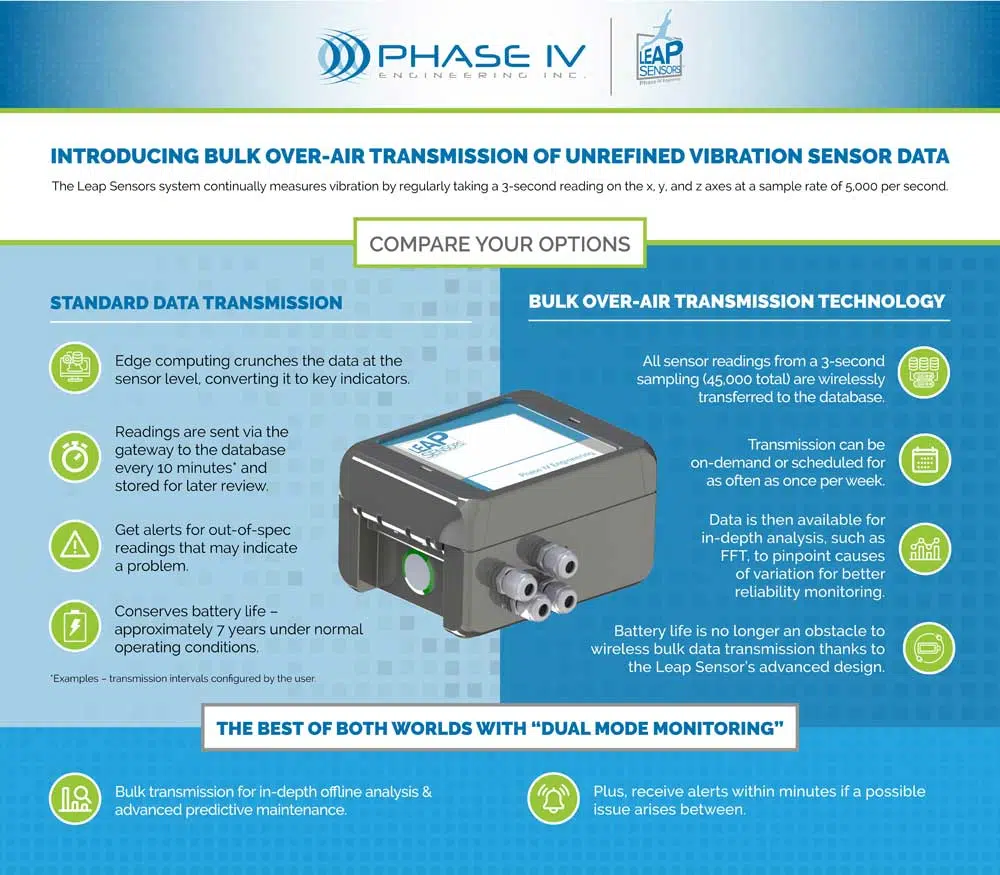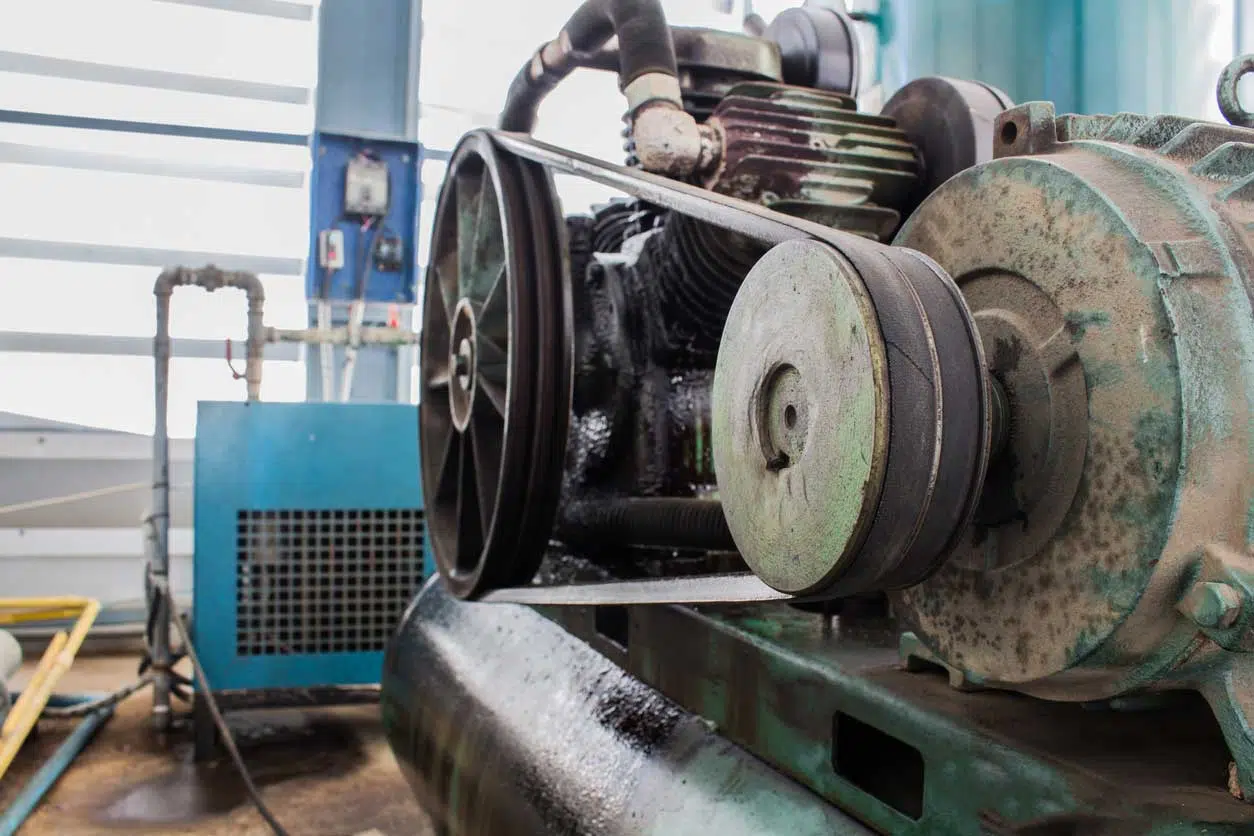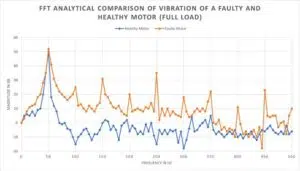Vibration monitoring is an established tool for predictive maintenance. Just like a rough-running car engine means it’s time to have a mechanic take a look – changes in the shaking, or vibration, of factory machinery can indicate a possible problem.
Phase IV’s Leap Sensors system offers sensors that monitor vibration only, as well as vibration in combination with two other predictors of motor health, temperature and amperes. (And with Leap’s modular, flexible multi-sensor design, you can combine vibration monitoring with basically any other sensor you may need.) Our standard vibration monitoring sensor leverages edge computing technology at the sensor level, and transmits industry-standard vibration readings to a user database for later review or auditing, and sends alerts when a measurement is out-of-spec.
Some of our clients, however, prefer to have a full raw data sampling in order to perform more in-depth analysis. This has been hard to achieve with wireless sensors due to the battery power required to transmit so much data at once. Now, thanks to Leap’s advanced design, we are excited to announce the launch of our latest feature: bulk over-air transmission of vibration sensor data. Ideal for sophisticated monitoring of critical equipment, or as an enhanced feature for contract maintenance firms that want to provide comprehensive vibration analysis – remotely.
How the Bulk Over-Air Transmission Works
The Leap vibration sensor will take a 3-seconds of g-force accelerometer sampling, at the rate of 5,000 readings per second, on the x, y, and z axes. The data (45,000 readings total) are then transmitted via the gateway to a database With Leap’s comprehensive configuration capabilities, a user can specify how often to schedule the sampling. Or the sampling can be done on-demand.
Until now, specially trained vibration analysis technicians have been contracted to travel to a manufacturing plant to do the sampling and analysis, as infrequently as once per year. Bulk over-air transmission is a game-changer, making regular, consistent vibration analysis convenient and cost-effective.

How Does Vibration Monitoring Work?
With so many moving components, all machines constantly vibrate. When a machine is running normally, the vibrations will fall in an established pattern. If something starts to vibrate more than normal, or in a different pattern, it can be an indication that something is wrong. Unlike a rough-running car, however, these variations may be subtle and only detectable through analysis such as FFT (Fast Fourier Transform.)
A vibration sensor measures shaking on a machine’s component, converting the mechanical movement into an electrical voltage. This data can then be input into a database, where a vibration expert can analyze and interpret vibration FFTs to detect faults such as bearing failures, bent shafts, motor faults, loose mountings, broken gear teeth, and more. If a problem is identified, the plant engineer can order a replacement part & schedule downtime for repair at a convenient time- possibly saving tens of thousands of dollars that could be lost due to an unexpected failure in the middle of a shift or a batch run.
The Best of Both Worlds: Dual Mode Monitoring
As mentioned previously, Leap’s standard monitoring protocol leverages edge computing to do all the vibration number crunching at the sensor level. Vibration averages and peaks are transmitted on a regular basis and stored for later review or auditing. The system also sends an alert if a reading is out of spec.
With the Dual Mode Monitoring option, customers can receive bulk transmission for in-depth monitoring & analysis, while also getting the peace of mind of continuous vibration monitoring that will send an alert via phone, text, or email if something occurs in between bulk transmission events.
Our customers have told us this a big enhancement for their vibration monitoring & predictive maintenance programs. They get the easy installation process of a wireless sensor system, a much more convenient method of bulk data monitoring for in-depth analysis such as FFT, and continuous monitoring with alerts.
Leap Sensors makes sophisticated vibration monitoring to prevent unplanned downtime fast and easy. How can remote vibration monitoring with bulk transmission benefit your predictive maintenance initiatives? Contact our wireless sensor experts to discuss your specific monitoring needs and goals – we can guide you to build the configuration that works best.

